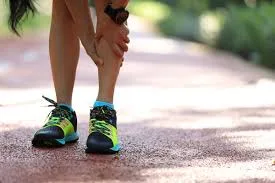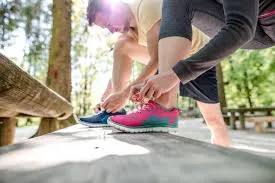shin splint, also known as runner’s leg syndrome; It is a stress syndrome that throws runners out of the track, especially in those who are just starting out or returning to running after a long time.
But runners aren’t the only victims among his victims. Any activity that requires jumping (think plyometrics, HIIT, and CrossFit workouts) can cause this condition. In this article, we have detailed this issue, which concerns many people, for you.
In this article, you can find out what really happened to your shinbone and what you should do to stay healthy and strong against it.
What is Shin Splint?
John Gallucci Jr., president of JAG Physical Therapy, New Jersey, says, “Runner’s leg syndrome; It occurs as a result of repeated traumas in the connective muscle tissues surrounding the tibia, that is, the tibia. “The muscle here is damaged and inflamed. During the healing process, it causes scar tissue to form where one of the calf muscles attaches to the shin, causing pain and stiffness.”

If you feel a sharp, sharp pain on the inside or front of your lower leg that is aggravated by an activity after a warm-up or persists after a workout; You may have runner’s leg syndrome. In more severe cases, the pain may turn into a sting, as if something sharp is being pricked.
Why Does It Happen?
Runner’s leg occurs inside the shin in most people.
“The job of the posterior tibialis (the muscle just behind the shinbone) is to prevent sprains when running, walking, and stopping,” explains physical therapist Jay Dicharry, author of Anatomy for Runners . However, when the muscles in the foot are weak, most of the weight placed on the foot falls on the muscles here. “Essentially, after you put more work into these muscles, they start to break down after a while.” In one third of the patients, the pain occurs in the anterior part. “Under normal conditions, the foot acts as a spring that absorbs the shock. But when the foot gets too stiff, it sends the pressure up, putting more stress on the muscles at the front of the shin,” says Dicharry.
Let’s also remind that flat-footed people are more sensitive to this situation. “A collapse of the arch of the foot or excessive inward bending of the foot also increases the pain and stress felt on the shinbone,” says Galucci.
What is the Best Treatment Method?
Put your legs on the ice several times a day to take a break from your activity and reduce muscle inflammation. You can use ice cubes for this. Pour water into small paper cups and freeze, then tear off the top of the glass and circle the area with ice for five minutes. “It reduces inflammation by breaking down painful adhesions,” Galucci says of this treatment.
The 2 Most Effective Shin Split Exercises
Stretching on the Ladder
Stand with the front of your feet on a step and your heels hanging off the step. Hold onto a handrail or wall for support. Feel the stretch in your calf as you slowly lower your left heel. Wait like this for 30 seconds; change legs.
Yawning on the Floor
Sit on the floor with your legs stretched out in front of you. Extend your toes forward and down, you can work one at a time or both legs. Hold the stretch for 30 seconds.
Read More AboutAdd Movement to Your Day with Home Pilates Moves
Previous ArticlAnimals appeared on a garbage island in the ocean: what does it mean



